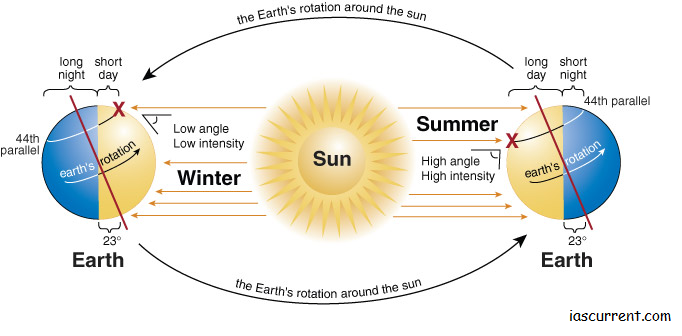Earth is a unique planet because life exists here and water is present. It is the 3rd planet from the sun. The shape of the earth is called Geoid. The earth’s surface is uneven. There are high mountain ranges and peaks and very deep trenches e.g., Mariana trench. In between, there are continents, hills, and valleys. There are 7 continents and 5 oceans. The continents are North America, South America Europe, Asia, Africa, and Antarctica. The oceans are the Atlantic Ocean, Pacific Ocean, Indian Ocean, Arctic Ocean, and the Southern Ocean.
On the earth, there is flattening over the poles and bulging over the equator. It means that the radius of the equatorial earth is longer than the polar earth.
Latitudes: Horizontal Lines
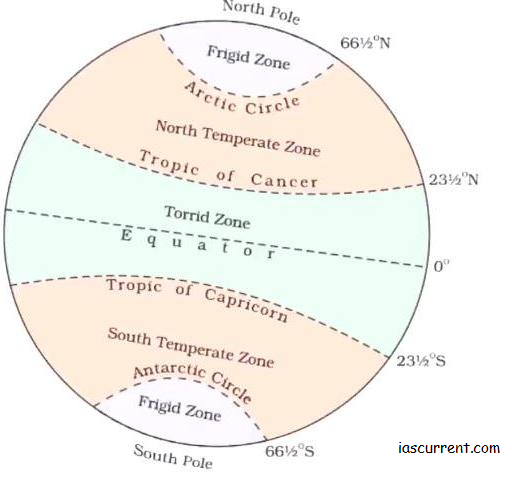
The line is drawn across the center of which divides the earth into two equal parts e., the northern and southern hemispheres, and runs parallel to the poles is called the Equator. The Equator is also known as the Great Circle Latitudes are the lines drawn on the paper to measure the angular distance of a place from the equator. There are 90 latitudes in the North and 90 latitudes in the South. 90 latitude in North and South are not lines but points.
The distance between the two latitudes increases with the increasing distance from the equator while moving towards the pole.
Longitudes: Vertical Lines
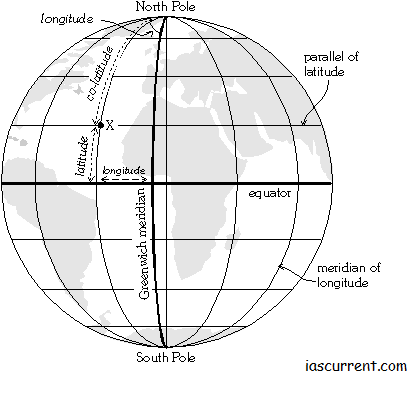 Longitudes are the lines drawn on the paper to show the angular distance of the place from the 0 longitudes. All the longitude converges on the poles and the maximum distance between two longitudes is recorded at the equator. There are 360 longitudes each drawn at intervals of 1o.0o longitude divides the earth into two hemispheres eastern hemispheres and western hemispheres. In this case, each hemisphere has 180 longitudes, and 180o East & 180 o West are the same.
Longitudes are the lines drawn on the paper to show the angular distance of the place from the 0 longitudes. All the longitude converges on the poles and the maximum distance between two longitudes is recorded at the equator. There are 360 longitudes each drawn at intervals of 1o.0o longitude divides the earth into two hemispheres eastern hemispheres and western hemispheres. In this case, each hemisphere has 180 longitudes, and 180o East & 180 o West are the same.
0-degree longitude connects the North Pole to the South Pole like any other longitudes. It passes through Greenwich Observatory of England. That is why it is called the Greenwich Line also. It is also known as Prime Meridian because the IST is calculated from here. Two capital cities are also located on this viz, London & Accra
The Motion of Earth
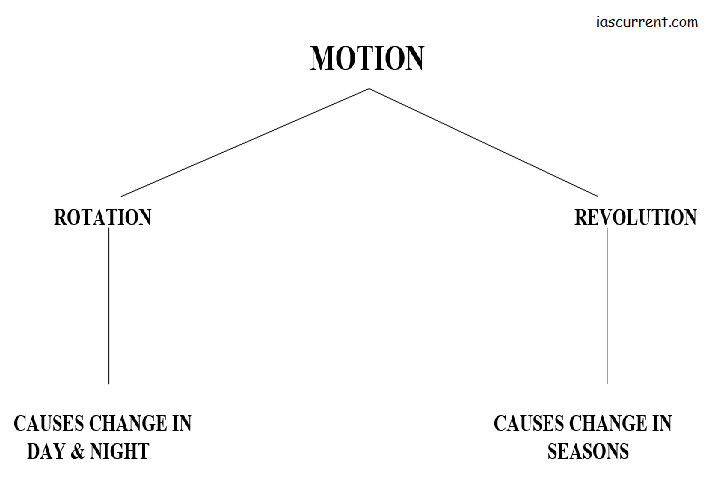
The changes in seasons are primarily due to the till of Earth at 23 ½ degree. Therefore, the apparent movement of the mid-day sun is confined between 23 ½ degrees N and 23 ½ degree S.
The changes in seasons are secondarily due to the revolution of the earth around the sun. Earth revolves in an anti-clockwise direction to the Sun.
Movements of Earth & related effects of Rotation
The rotation of the earth is around the polar Axis. Earth rotates from west to east completing one rotation in 24 hours. The effects of the rotation of earth are:
- Change in day and night.
- Deflation on winds and Oceanic currents.
- Change in time and date.
- The appearance of the moon and tide.

Climatology: Study of Atmosphere
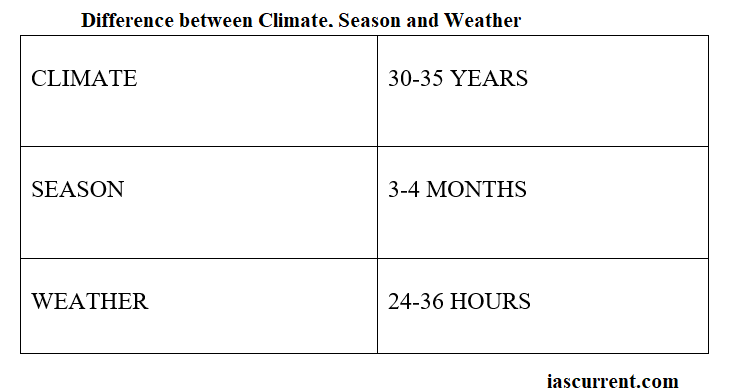
A study of the atmosphere is climatology. The concept of climate/weather/ seasons is discussed based on their parameters like humidity, temperature, and pressure. We will discuss this topic in a separate chapter later.
Global Time Zones
Earth has been divided into 24 time zones 12 in each hemisphere. The number of time zone in a country depends on its longitudinal extent.
- Canada has 5 time zones.
- Australia has 3 time zones.
- Russia has 9 time zones. (Highest)
- The USA has 6 time zones including Hawaii.
- India and China both have one single time zone.
- In each time zone, 7.5 degrees (71/2 degree) is going to be multiple for each standard time.
Daylight Saving: Adjustment of Day according to Sunlight
In temperate and sub-polar regions, during the summer season, the day becomes longer with the sun rising early and setting late. Days are thus significantly longer. In such countries, the clock runs one hour early. Thus offices and establishments start and close earlier. This system was used in World War-I (which was a Total War like World War- II. Daylight saving time results in fuel consumption due to the early rise & closure of establishments.
International Dateline (IDL)
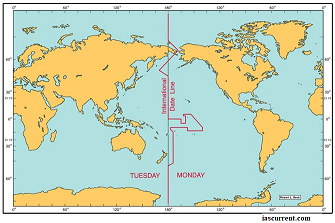 The IDL is not a strictly straight line. It, in fact, bends around intervening land masses like continents, countries, and islands in such a way that it keeps all these under the one-time zone.
The IDL is not a strictly straight line. It, in fact, bends around intervening land masses like continents, countries, and islands in such a way that it keeps all these under the one-time zone. 

